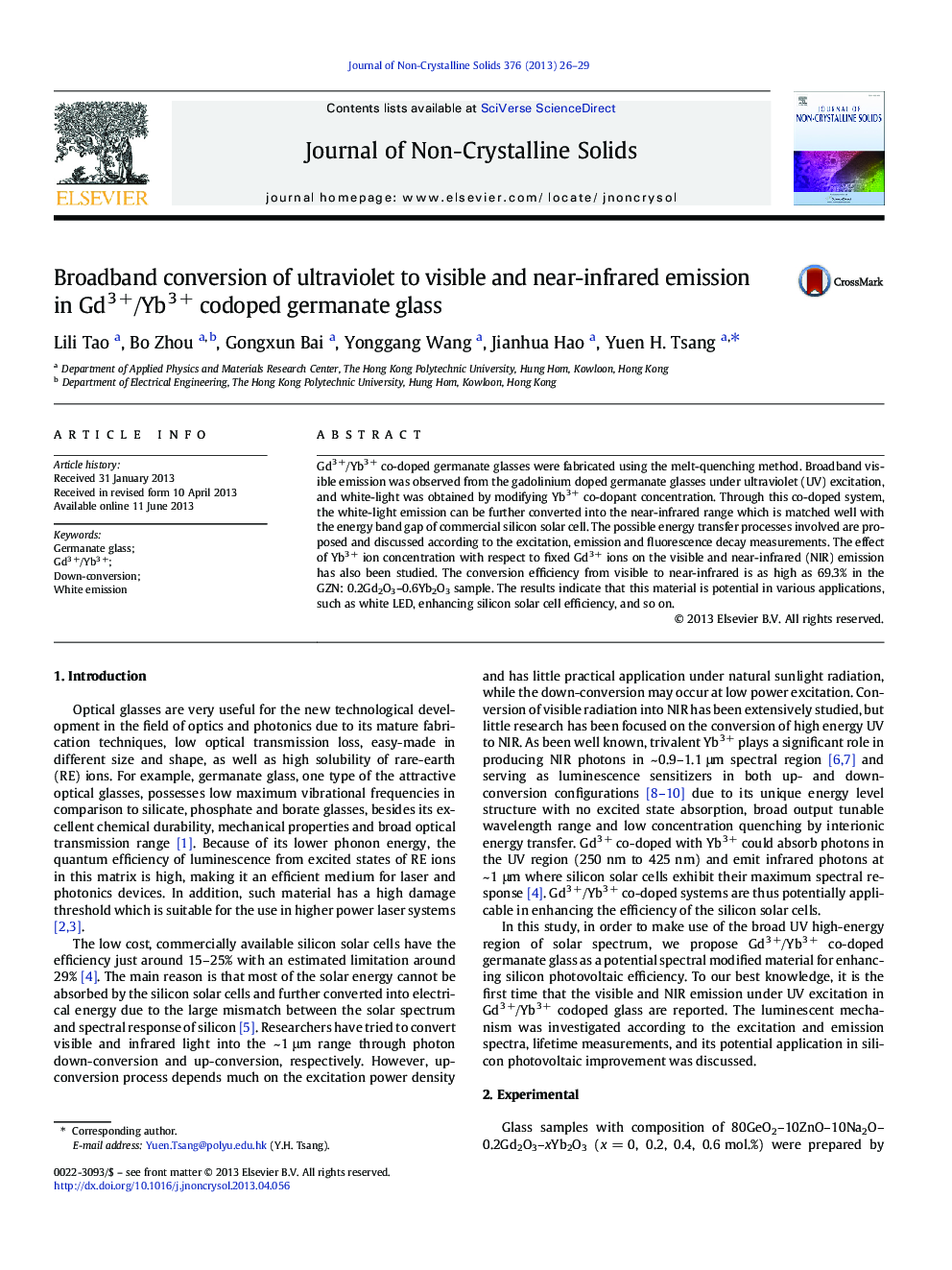| Article ID | Journal | Published Year | Pages | File Type |
|---|---|---|---|---|
| 7903552 | Journal of Non-Crystalline Solids | 2013 | 4 Pages |
Abstract
Gd3Â +/Yb3Â + co-doped germanate glasses were fabricated using the melt-quenching method. Broadband visible emission was observed from the gadolinium doped germanate glasses under ultraviolet (UV) excitation, and white-light was obtained by modifying Yb3Â + co-dopant concentration. Through this co-doped system, the white-light emission can be further converted into the near-infrared range which is matched well with the energy band gap of commercial silicon solar cell. The possible energy transfer processes involved are proposed and discussed according to the excitation, emission and fluorescence decay measurements. The effect of Yb3Â + ion concentration with respect to fixed Gd3Â + ions on the visible and near-infrared (NIR) emission has also been studied. The conversion efficiency from visible to near-infrared is as high as 69.3% in the GZN: 0.2Gd2O3-0.6Yb2O3 sample. The results indicate that this material is potential in various applications, such as white LED, enhancing silicon solar cell efficiency, and so on.
Related Topics
Physical Sciences and Engineering
Materials Science
Ceramics and Composites
Authors
Lili Tao, Bo Zhou, Gongxun Bai, Yonggang Wang, Jianhua Hao, Yuen H. Tsang,
